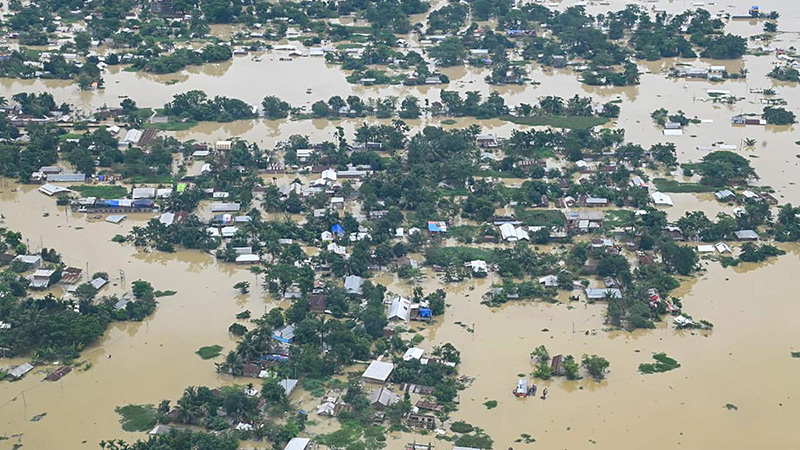
Increasing frequency of natural disasters is observed around the world in recent years. India is also highly vulnerable to water related disasters such as floods, droughts and cyclones. More than 12% of India’s geographical area is flood prone as per data by the Ministry of Home Affairs. Floods are recurrent phenomena and cause huge losses of life and property. Marginalized suffers the most.
It is a cause for concern that flood related damages show an increasing trend. It is observed that while during 1965-75 the number of flood events was lower than 20, it has increased to 100 during 2005-2015. India has faced 649 disasters from 1915 to 2015 out of which 302 were caused by flood with an average of 3 floods per year. This accounted approximately 47% of total disasters took place in India in last 100 years. The average annual flood damage in during the period of 1996 to 2005 was Rs. 4745 crore as compared to Rs. 1805 crore, the corresponding average for the previous 53 years. If we look at top ten disasters in the last ten years we find that flood alone had killed nearly 84% of the total person killed by the top ten disasters.
On an average, 28% of the geographical area of India is vulnerable to drought. Temporal studies have shown no trend in number or frequency of drought event in India. In depth studies indicates that the drought occurrences in east Uttar Pradesh, Bihar, Assam and Meghalaya are most alarming. Kerala, Tamil Nadu, Chhattisgarh, Jharkhand, Odisha, east Madhya Pradesh, Uttaranchal, west Uttar Pradesh, Punjab, Himachal Pradesh are also in alarming stage with respect to drought events as many districts in these states reported increasing trends in drought occurrences. Probability of drought occurrences in India, based on 115 years of data, varies between 10 - 26 % with central and peninsular India having the higher probabilities. Trend analysis on the time series of area under drought condition shows that seven meteorological subdivisions viz. Uttarakhand, east Uttar Pradesh, Jharkhand, Chhattisgarh, Assam & Meghalaya, Nagaland, Manipur, Mizoram & Tripura and Kerala having a significant increasing trend in the area under drought condition.
Tropical cyclones are very common in the coastal regions of India. The coastline of India expands about 7516 kms and exposed to nearly 10% of the world’s tropical cyclones. Sea Surface Temperature (SST) is a trigger to tropical cyclones for their genesis and intensification. Global warming heats both sea surface and deep water, thus creates ideal conditions for a cyclone to survive and thrive in its long journey. Sea Surface Temperature is increasing so fast and is high in the equatorial Indian Ocean compared to the other oceans. It has increased 0.6°C over the North Indian Ocean. Recent increase in severity of tropical cyclones in Bay of Bengal region is because of the increase in Sea Surface Temperature since 1960, the largest warming among the tropical oceans. The increasing trend in the cyclone frequency over the Bay of Bengal for the last 122 years during May has been + 0.36. Keeping in view the average frequency of one cyclone every three years in May, this trend is highly significant.
In November 2021, heavy rain caused extensive floods across south-eastern India, leading to casualties in Andhra Pradesh and Tamil Nadu. Floods, caused by heavy rain, river overflow and dam failure in Andhra Pradesh have led to an increase in the number of casualties. A massive landslide triggered by heavy rainfall occurred in the Tupul Yard Railway construction camp in Manipur on 30 June 2022, resulting in heavy casualties and damages.
On 6 July 2022, flash floods in Chojh and Bhunter Towns in Himachal Pradesh resulted in fatalities. As of 6 July 2022, the floods caused by heavy rainfall has caused 767 fatalities (of which 184 in Assam, 179 in Himachal Pradesh, 65 in Maharashtra, and 55 in Madhya Pradesh), as reported by the National Emergency Response Centre (NDMI). At least 75 people are currently missing, and about 1,220 individuals sustained injuries. About 751,200 people have been evacuated to 4,200 relief camps mostly located in Assam, which is one of the worst affected States.